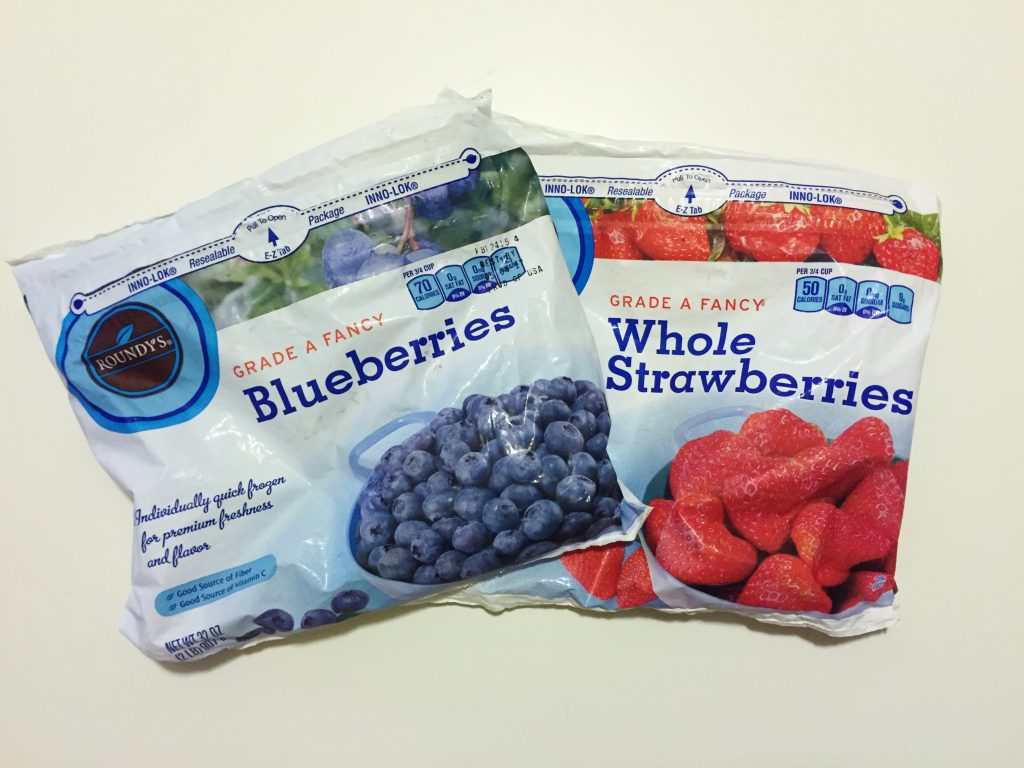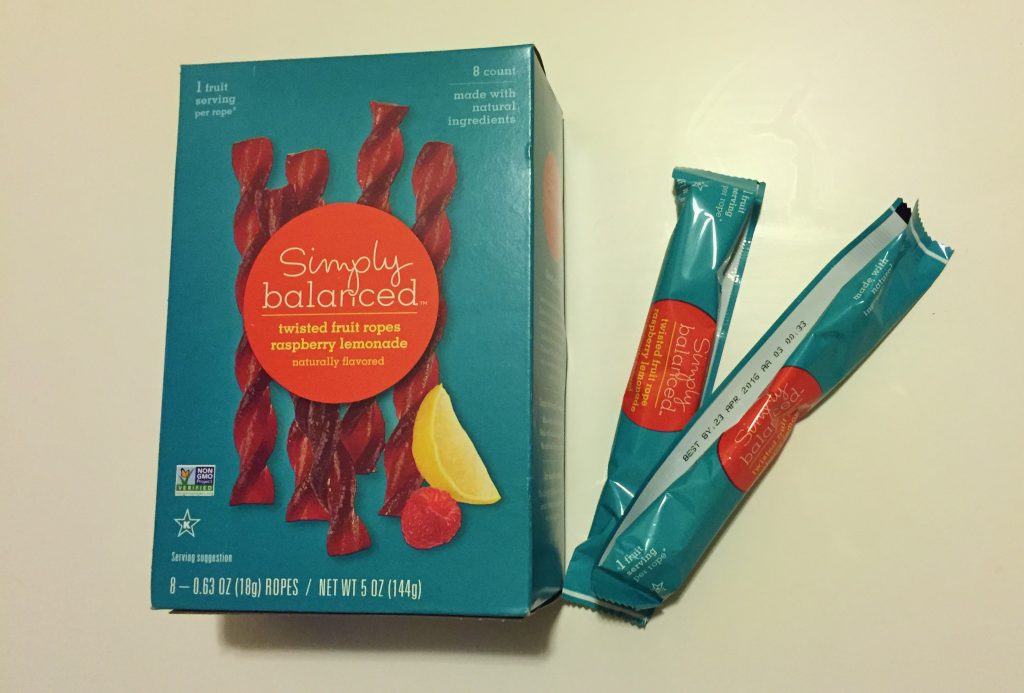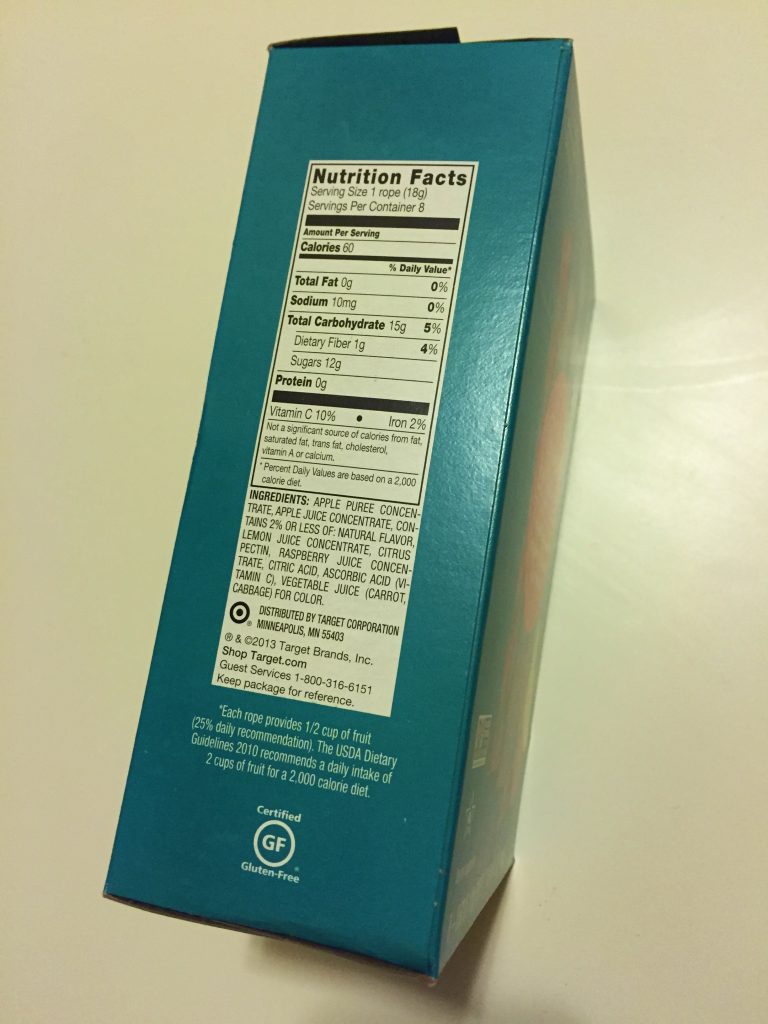Remember that 5 A Day campaign that existed when we were kids? I think there was even a CD-ROM you could get to play a 5 A Day game on your computer. Well, things have changed a little since the time of floppy discs, but one thing stays the same — you need to be proactive about making sure you’re getting enough fruits and veggies in your diet. (P.S. These hilarious YouTubers are doing it, well, not as it was intended).
In this edition of the Simple Eating series, I want to talk about fruit, and how to easily incorporate it into your daily diet. The USDA says that a 19-30 year old woman needs to get 2 cups of fruit each day (click here if you’re not in that category). I’m not sure if counting it as a cup rather than how many pieces of fruit you need is easier, but here’s what generally counts as one cup:
- Half of a large apple or a small apple
- A large banana
- A large orange
- A medium pear
- About 8 large strawberries
- 1/2 cup of any dried fruit
The USDA will also tell you that fruit juice counts, but that’s a bunch of bull in my opinion. Stay away from fruit juice because it’s not going to make you feel full and you’re missing out on a lot of important fiber. Fruit is delicious, and there are much better ways to get your daily servings of fruit that doesn’t come in a glass.
Fresh fruit is the way to go in my opinion, but if you’re having a hard time getting into the habit of eating this stuff and it ends up going bad, that’s no good either. So what are your alternatives?

Frozen fruit
Go buy yourself a cheap, small blender (small is easier for storing and clean up… I have an older version of this $17 one from Target and love it) and make yourself a smoothie for breakfast or an afternoon snack. Frozen fruit has the same amount of vitamins as the fresh stuff, so you’re not losing out on anything, really.
Dried fruit
There’s actually a ton of different dried fruit options out there beyond just raisins. Watch out for dried cranberries in particular. Because they’re very tart, you’ll find that they need to add a LOT of sugar to make them taste good. Always read the labels! The ingredients list will help you see if sugar has been added. The nutrition facts shows you all the sugar, which includes the stuff that occurs naturally in the fruit, so you have to dig a little deeper and read the ingredients to find if any extra is in the mix.

You can buy your typical dried fruit that still has some moisture (like a raisin) or you can buy freeze dried. Target has a great selection of this stuff, and it’s hard and crunchy, almost like a chip. I’ve had the apples and strawberries. Weird, but fun. They’re not a super great price and the serving sizes are actually pretty large (so you could end up eating the whole bag), but it’s a great go-to if you need to grab-and-go but don’t have fresh fruit on hand.
Fruit snacks
Don’t get too excited, yet! No cartoon-shaped fruit snacks for you. Even though many brands will boast having great amounts of vitamin C, that comes along with a lot of artificial colors and added sugars that really defeat the purpose. I’ve found that Target carries a variety of decent fruit snacks as part of their Simply Balanced brand that are pretty decent, all things considered. Fresh fruit needs to be your go to here, but if you’re rushing to class or work or whatever and don’t have anything else on hand, these will do the trick. But limit yourself to one of these a day, at most.

Tips for fresh fruit
Fresh fruit isn’t the cheapest thing on the planet, so here are some tips when you’re roaming the produce aisles and scoping out the apples and bananas and oranges … oh my! Plus, I couldn’t help but share a few important storage tips, too:
- Shop the sale items. Often, a certain type of apple is on sale for a given week. Give a new variety a try if it’s on a nice discount.
- Buy yellow bananas and some green ones. Even though I think I eat bananas fast enough to buy a bunch of 5 or 6 at a time, I always end up with browning ones (see the photo at the top, clearly). Don’t be shy. Bust off two yellows and two green ones to get you through the week.
- When you bring your fruits home, don’t leave them in the product bags. Store them loose on the counter (or in a cute metal basket, like I’ve done!).
- Want something to ripen faster? Like some bananas? Put them in a paper bag with an apple.
- If you’re planning to enjoy a melon, let it ripen on the counter but then be sure to wash it thoroughly before you cut it. No, you’re not eating the outside, but melons are notorious for being bad guys for germs, and when you cut the melon, you get that bacteria all over the insides. Yuck!
- Wash off any berries you buy (really, really watch for sales on these pricey buggers), and its okay to pick out the moldy ones — that’ll prevent the spread of mold to the others. Rinse the rest, and you’re good to go.
- Generally speaking, your fruit will last longer (well, ripen slower) if you store it in the fridge rather than the counter. If it’s something that’s already been cut, like a pineapple (again, watch for the pricey-ness of pre-cut stuff), keep it in the fridge. Grapes, citrus, and berries should also be in the fridge.
- Keep fruits and veggies separate. Fruit gives off a lot of gases that speed up the ripening process, which can prematurely spoil your veggies.
So there you have it. How much fruit to eat. How to shop for and store fruit. And a few good backup plans when fresh fruit just isn’t in the cards. Now, go enjoy!

